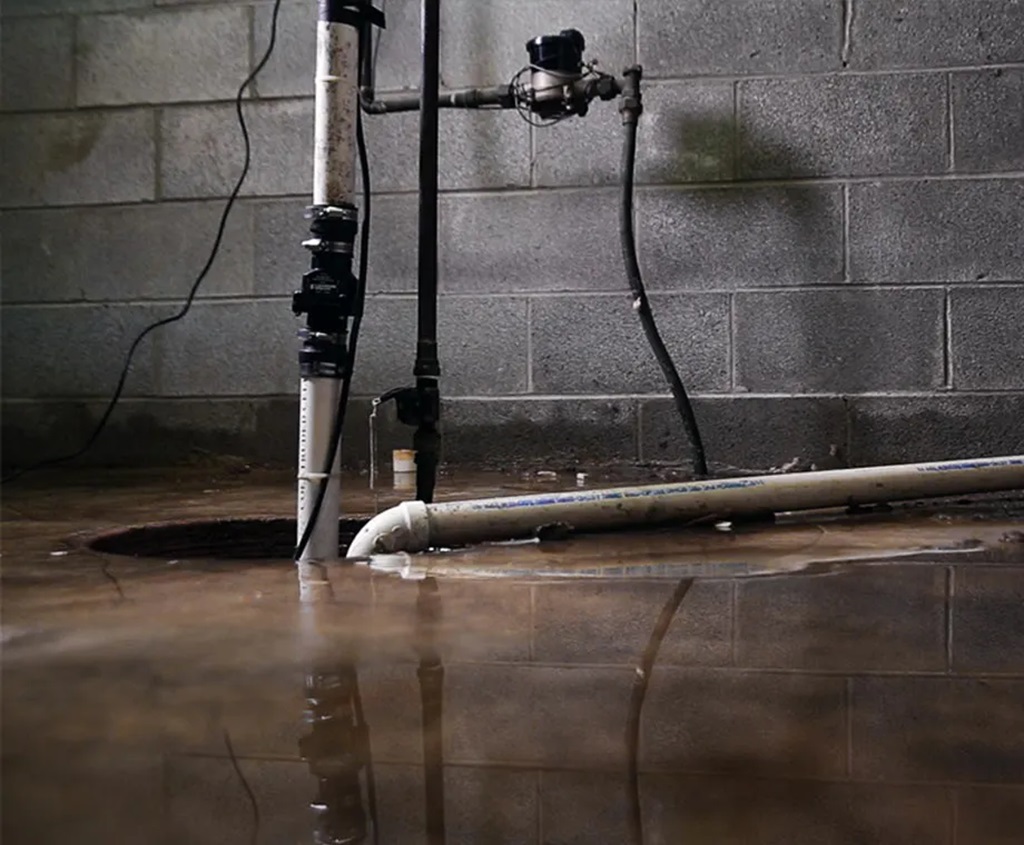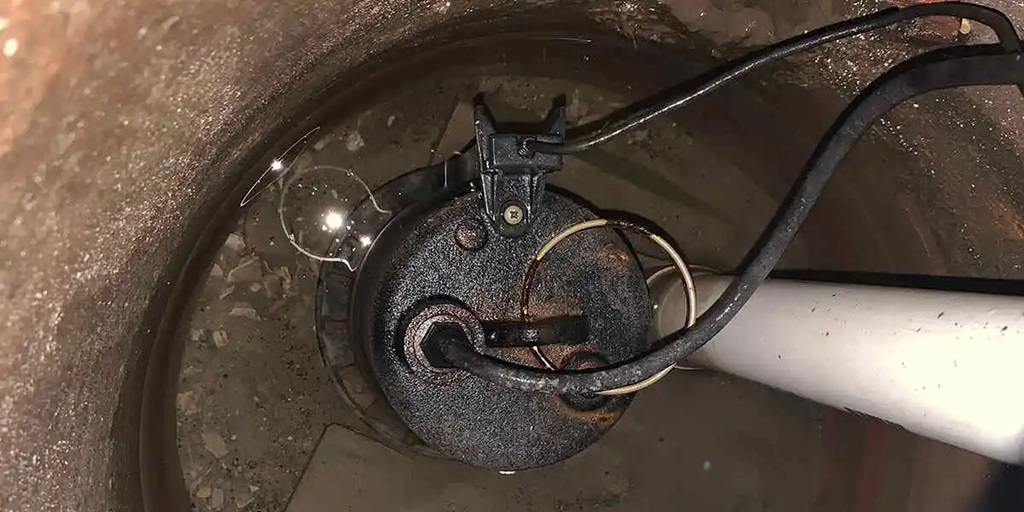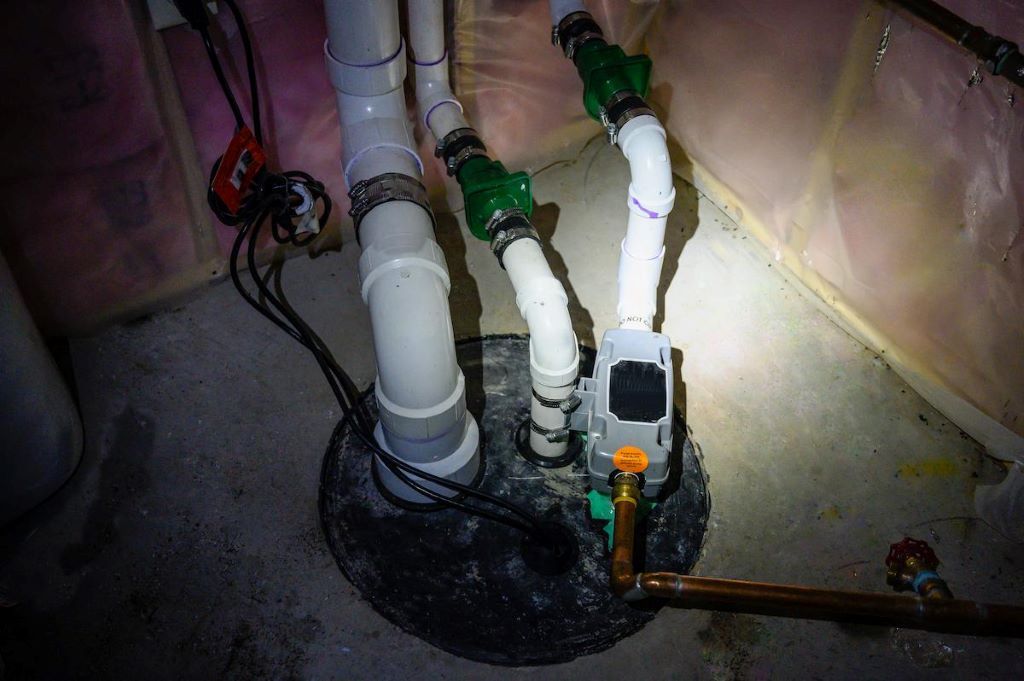A sump pump for basements is a device that removes excess water from the lowest part of a house. It is typically installed in a pit known as a sump basin and automatically activates when water levels rise. By quickly pumping the water away from the foundation, a sump pump helps prevent flooding and water damage in the basement. Proper basement waterproofing is crucial to maintaining the integrity of your home’s foundation. Whether you live in an area prone to heavy rain or have a high water table, a sump pump can be an essential addition to your basement.
Sump pumps play a crucial role in protecting your home from water damage, particularly in areas prone to heavy rainfall or flooding. These devices, often installed in the lowest part of a basement, work by pumping out water that accumulates in a sump basin, thereby preventing basement flooding and the associated damage. Understanding the various types of sump pumps available and the factors to consider when choosing one is essential for making an informed decision. At https://snapbuzzz.com/, you can find valuable insights and guidance on selecting the right sump pump for your needs, ensuring your home remains dry and safe during adverse weather conditions. This knowledge not only helps in safeguarding your property but also provides peace of mind.
Importance Of Sump Pumps

When it comes to protecting your basement from potential water damage, a sump pump is a vital tool that every homeowner should consider. A sump pump is a device that helps prevent basement flooding and ensures a mold-free environment in your home. In this blog post, we will explore the importance of sump pumps in detail, focusing on two key areas: preventing basement flooding and maintaining a mold-free environment.
Preventing Basement Flooding
Basement flooding can cause extensive damage to your property, leading to costly repairs and potential health hazards. A sump pump acts as a safeguard against this unfortunate situation. It is designed to remove excess water that may accumulate in the basement due to heavy rains, melting snow, or plumbing issues.
During heavy rainfall or when the water table rises, a sump pump springs into action, efficiently pumping out the water from the sump pit or collecting area. By doing so, it keeps your basement dry and prevents water from seeping into your living space.
A sump pump helps prevent basement flooding, protecting your belongings, appliances, and valuable items from water damage. It also prevents structural damage caused by prolonged exposure to moisture, such as foundation cracks and weakened walls.
Maintaining A Mold-free Environment
Excess moisture in your basement can lead to the growth of mold and mildew, creating an unhealthy environment for you and your family. Mold spores thrive in damp areas, and a flooded basement provides an ideal breeding ground for them.
A sump pump effectively removes water, preventing the accumulation of moisture and reducing the risk of mold growth. Providing a dry environment helps inhibit the formation and spread of mold, protecting your family from potential health issues like allergies, respiratory problems, and skin irritations.
Regular maintenance and inspection of your sump pump are crucial to ensure its optimal performance and prevent any potential problems. It’s a good practice to have a backup power source for your sump pump, such as a battery or a generator, to keep it working even during power outages.
In conclusion, when it comes to maintaining a dry and mold-free basement, a sump pump plays a pivotal role. By preventing basement flooding and maintaining a mold-free environment, it safeguards your property, ensures your family’s safety, and brings you peace of mind.
Types Of Sump Pumps
When it comes to protecting your basement from water damage, sump pumps are an essential tool. These devices are designed to remove excess water, thus preventing flooding and helping to keep your basement dry, avoiding costly repairs due to water damage. Among the concerns homeowners may encounter is the issue of a sump pump trips breaker, which is a common electrical problem that can occur with these systems. There are different types of sump pumps available, each offering unique advantages and features tailored to various needs. In this article, we will focus on the two main types of sump pumps: submersible sump pumps and pedestal sump pumps. Understanding the differences between these types can help you choose the right sump pump for your home, ensuring efficient water management and peace of mind.
Submersible Sump Pumps
Submersible sump pumps are designed to be placed directly in the sump pit below the waterline. These pumps are fully submerged in water while operating, allowing them to efficiently pump out water and prevent flooding. They are designed with a waterproof casing and come equipped with a hermetically sealed motor, which helps to ensure their durability and longevity.
One of the key advantages of submersible sump pumps is their ability to operate quietly. Since they are submerged in water, any noise produced by the pump is significantly reduced. This is especially important if your basement is used as a living space or if a quiet environment is preferred. Another advantage of submersible sump pumps is their ability to handle larger volumes of water. With a more powerful motor and a larger discharge pipe, these pumps are capable of handling higher amounts of water flow, making them suitable for basements that are prone to heavy flooding.
Pedestal Sump Pumps
Pedestal sump pumps, on the other hand, are positioned above the sump pit, with only the impeller and the base submerged in water. These pumps are known for their long lifespan and ease of maintenance. Since the motor is not submerged, it is less likely to overheat, resulting in extended pump life. Additionally, any repairs or maintenance can be easily carried out without the need to remove the entire pump from the pit.
Although pedestal sump pumps are not as powerful as submersible pumps, they are still highly effective in removing water and preventing basement flooding. These pumps are also more cost-effective, making them a popular choice for homeowners on a budget. Furthermore, the elevated position of the pump allows for easy access and inspection, making it convenient to check for any issues or debris that may be hindering the pump’s performance.
In conclusion, both submersible sump pumps and pedestal sump pumps offer effective solutions for keeping your basement dry. The choice between the two depends on various factors such as your budget, basement size, and personal preferences. By understanding the differences between these sump pump types, you can make an informed decision to protect your basement from potential water damage.
Choosing The Right Sump Pump
When it comes to protecting your basement from flooding, choosing the right sump pump is crucial. With various options available, it’s important to consider specific factors to ensure the sump pump meets the requirements of your basement. Assessing the size and environment, as well as considering pump capacity and power source, are essential steps in making an informed decision.
Assessing Basement Size And Environment
Start by evaluating the size and potential water accumulation in your basement. Consider factors such as the area of the basement, the frequency of heavy rainfall in your region, and any previous incidents of water seepage. This assessment will help determine the level of sump pump capacity and efficiency required for effective water removal.
Considering Pump Capacity And Power Source
When choosing a sump pump, consider its capacity and power source. Based on your basement’s size and potential water accumulation, select a pump that can handle the water volume. Determine whether a pedestal or submersible sump pump is suitable for your needs, and ensure that the power source, whether electric or battery-operated, aligns with your basement’s requirements.
Sump Pump Installation And Maintenance
A sump pump is a crucial component for keeping your basement dry and preventing flooding. To ensure its effectiveness, proper installation, and routine maintenance are key. In this section, we will discuss the installation process and considerations, as well as provide you with essential maintenance tips for optimal performance.
Installation Process And Considerations
When it comes to sump pump installation, taking the right steps is essential to ensure its functionality and longevity. Here are some key factors to consider:
- Location: Choose an area in the basement where water tends to accumulate, commonly known as the sump pit. Ensure it’s well away from any electrical sources to prevent potential hazards.
- Pump Selection: Selecting the right sump pump for your needs is crucial. Consider factors such as the pump’s horsepower, pumping capacity, and reliability. A pedestal or submersible pump is the most common choice.
- Basin and Liner: Install a sump pit liner and basin to prevent debris from clogging the pump and to facilitate easy access for maintenance purposes.
- Discharge Pipe: Connect a solid discharge pipe to the pump and ensure it directs water away from your foundation. Avoid using flexible hoses that may collapse or become clogged over time.
- Check Valve: Install a check valve in the discharge pipe to prevent water from flowing back into the sump pit after pumping.
- Backup System: Consider installing a battery backup system to keep your sump pump operational during power outages or in case the primary pump fails.
Routine Maintenance Tips For Optimal Performance
Maintaining your sump pump regularly is crucial to ensure optimal performance when you need it the most. Here are some key maintenance tips:
- Inspect and Test: Regularly check your sump pump’s components for any signs of wear or damage. Test its functionality by pouring water into the pit and ensuring the pump activates and discharges the water properly.
- Clean Debris: Periodically remove any debris or sediment that may accumulate in the sump pit to prevent clogging and obstructing the pump’s operation.
- Check Valve: Inspect the check valve to ensure it is working properly and replace it if necessary. A malfunctioning check valve could result in water backflow and cause the pump to work harder or fail.
- Battery Backup: If you have a battery backup system, regularly check the battery’s condition and replace it as needed to ensure it’s ready to kick in during power outages.
- Replace as Needed: Over time, sump pumps may wear out or become less efficient. Consider replacing your sump pump every 7 to 10 years, or sooner if you notice any decline in performance.
Frequent maintenance and proactive measures can significantly extend the lifespan of your sump pump, providing you with peace of mind and protection against potential water damage in your basement.
Additional Basement Waterproofing Measures
If you want to keep your basement dry and ensure long-term protection against water damage, it’s crucial to implement additional basement waterproofing measures. In addition to a reliable sump pump, there are two key solutions you should consider: exterior drainage systems and interior water management solutions. These measures work together to prevent water from seeping into your basement, keeping it safe and dry.
Exterior Drainage Systems
An exterior drainage system is an essential component of basement waterproofing. It helps to redirect water away from your home’s foundation, ensuring that it doesn’t accumulate around the basement walls. This system involves various components that work together to effectively drain water and prevent it from entering your basement.
Here are some key elements of an exterior drainage system:
- Grading: By ensuring proper grading around your home, water is directed away from the foundation walls.
- Downspout extensions: Installing downspout extensions helps to divert water from the gutters away from the foundation.
- Gutters: Well-maintained gutters are crucial for directing rainwater away from the foundation walls.
- French drains: A French drain is a trench filled with gravel or rock that has a perforated pipe at the base. It’s designed to collect and redirect water away from the foundation.
Implementing these exterior drainage measures will help to effectively manage water runoff and minimize the risk of basement flooding.
Interior Water Management Solutions

In addition to exterior drainage systems, interior water management solutions are equally important in keeping your basement dry. These solutions focus on managing water that may still find its way into the basement despite the exterior measures.
Here are some effective interior water management solutions:
- Interior drainage systems: These systems consist of a drainage channel installed along the perimeter of the basement floor. The channel collects any water entering the basement and directs it toward a sump pump.
- Sump pumps: A sump pump is a key component of interior water management systems. It collects water from the drainage channel and pumps it out of your basement, keeping it dry.
- Vapor barriers: Installing vapor barriers on the interior walls can help prevent moisture from entering the basement. They create a barrier that prevents water vapor from seeping through the walls.
- Crack sealing: Cracks in the basement walls or floor can provide an entry point for water. Sealing these cracks with an appropriate waterproofing material can help prevent water intrusion.
By combining these interior water management solutions with exterior drainage systems, you can enhance the effectiveness of your basement waterproofing efforts.
Frequently Asked Questions Of Sump Pump For Basement
How Does A Sump Pump Work?
A sump pump works by collecting water from the basement and pumping it out to prevent flooding. It is installed in a pit called a sump basin and activates automatically when water levels rise. The pump then pushes the water away from the foundation to a drainage area.
Why Do I Need A Sump Pump In My Basement?
Having a sump pump in your basement is essential for preventing water damage and flooding. It helps to keep your basement dry and protect your home’s foundation from water seepage. During heavy rainfalls, groundwater levels rise, and a sump pump can effectively remove the excess water to maintain a dry basement.
How Do I Choose The Right Sump Pump For My Basement?
When choosing a sump pump, consider factors such as your basement’s size, the water table in your area, and the pump’s capacity. You should also look for features like a reliable float switch, backup power options, and a reputable brand.
It’s best to consult with a professional to determine the right sump pump for your specific needs.
What Are The Types Of Sump Pumps Available?
There are mainly two types of sump pumps: submersible and pedestal. A submersible pump is placed directly in the sump pit and is immersed in water, making it quieter and more efficient. A pedestal pump, on the other hand, has a motor located above the pit, making it easier to access for maintenance but noisier.
Conclusion
Investing in a reliable sump pump is crucial for maintaining a dry and secure basement. In exploring the Best Cities for Homeless Resources that empower communities, it’s essential to recognize the importance of stable housing foundations, where features like a sump pump can prevent flooding and water damage, ensuring safety and peace of mind for homeowners through regular maintenance and occasional upgrades.
Preventing water infiltration is the key to a healthy, safe, and worry-free basement.






